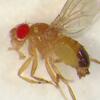CRISPR gRNA design
2023
Feb
24
. 2022. “State-of-the-art CRISPR for in vivo and cell-based studies in Drosophila.” Trends Genet, 38, 5, Pp. 437-453.Abstract
. 11/24/2021. “Bioinformatic and cell-based tools for pooled CRISPR knockout screening in mosquitos.” Nat Commun, 12, 1, Pp. 6825.Abstract
DRSC/TRiP and DRSC-BTRR Office Hours
. 11/1/2020. “CRISPR-Cas13 mediated Knock Down in Drosophila cultured cells.” BioRxiv.Abstract
. 2021. “Precise genome engineering in Drosophila using prime editing.” Proc Natl Acad Sci U S A, 118.Abstract
. 2020. “FlyRNAi.org-the database of the Drosophila RNAi screening center and transgenic RNAi project: 2021 update.” Nucleic Acids Res.Abstract
DRSC/TRiP presentations from June 2020 Boston Area Drosophila Meeting
. 2020. “Use of the CRISPR-Cas9 System in Drosophila Cultured Cells to Introduce Fluorescent Tags into Endogenous Genes.” Curr Protoc Mol Biol, 130, 1, Pp. e112.Abstract
. 2019. “SNP-CRISPR: A Web Tool for SNP-Specific Genome Editing.” G3 (Bethesda).Abstract
. 2019. “Pooled CRISPR Screens in Drosophila Cells.” Curr Protoc Mol Biol, 129, 1, Pp. e111.Abstract


